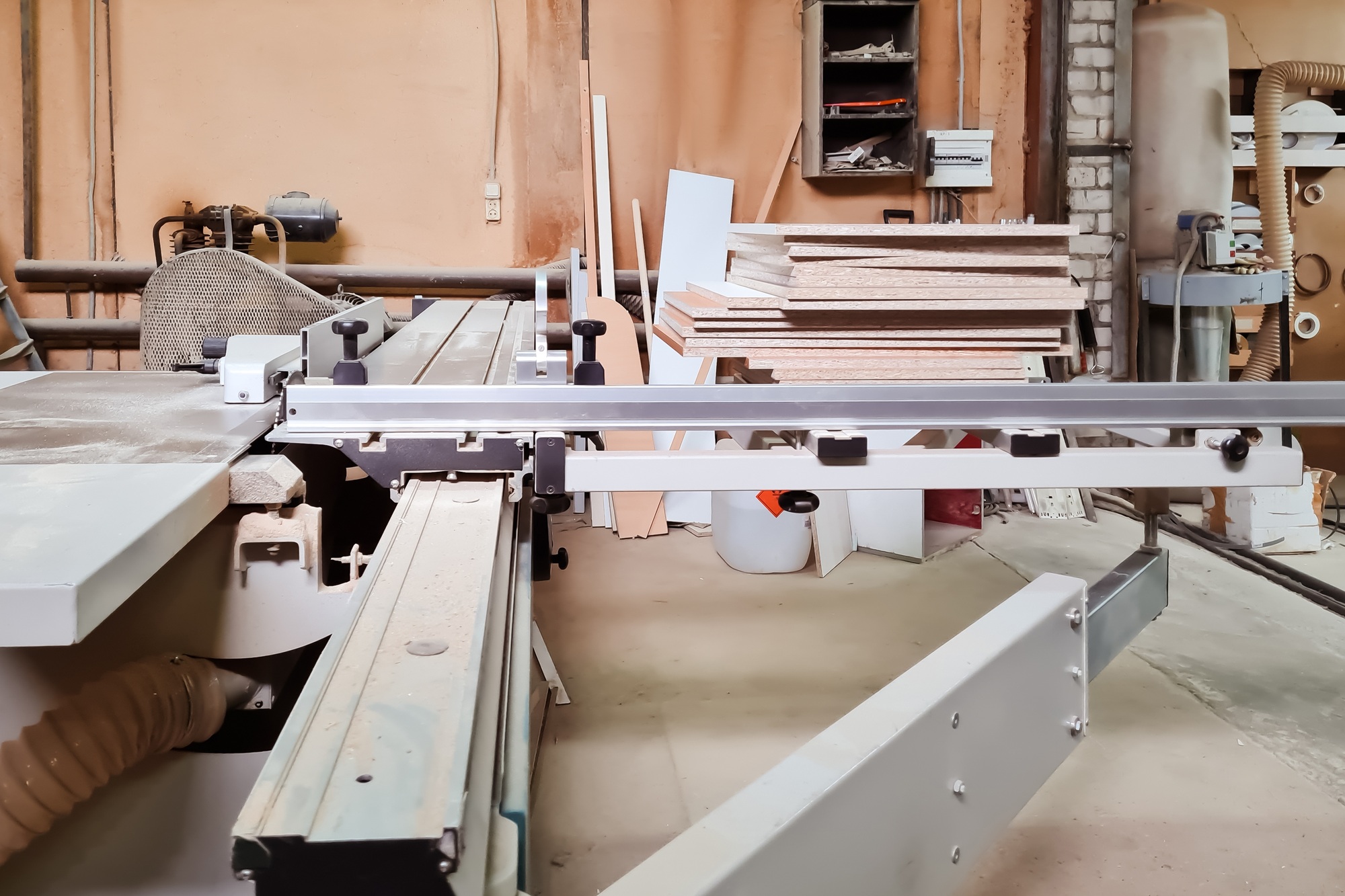Key Takeaways

- Market Research is Crucial: Understand local demand, identify competitors, and find gaps in the market to position your woodworking business effectively.
- Develop a Comprehensive Business Plan: Outline your business goals, target audience, services, and marketing strategies to create a roadmap for success.
- Build Your Skills and Workspace: Enhance your woodworking abilities through training and ensure your workspace is organized, safe, and equipped with the necessary tools.
- Legal Compliance: Carefully research and obtain the necessary permits, licenses, and insurance to operate your woodworking business legally and safely.
- Establish a Strong Online Presence: Create a professional website and leverage social media to showcase your work and engage potential customers to boost your visibility.
- Effective Financial Management: Track expenses and income diligently, set a realistic budget, and understand your tax obligations to ensure your business’s financial health.
If you’ve ever dreamed of turning your passion for woodworking into a thriving business, you’re in the right place. The world of woodworking offers endless possibilities, from crafting unique furniture to creating custom home decor. With the right approach, you can transform your skills into a profitable venture that not only fulfills your creative desires but also provides financial freedom.
Starting a woodworking business requires more than just talent; it demands a solid plan and an understanding of the market. Whether you’re a seasoned woodworker or just starting out, knowing the ins and outs of launching your business can set you on the path to success. Let’s explore the essential steps to help you carve out your niche in this rewarding industry.
How to Start a Woodworking Business

Starting a woodworking business involves several crucial steps that help ensure success.
- Research the Market
Understand the demand for woodworking services and products in your area. Analyze competitors. Identify gaps in the market.
- Develop a Business Plan
Create a comprehensive business plan. Outline objectives, target audience, and financial projections. Include marketing strategies and funding options.
- Acquire Necessary Skills
Enhance woodworking skills through classes or workshops. Gain proficiency in various techniques and tools relevant to your niche, such as custom furniture or home decor.
- Set Up Your Workspace
Organize a dedicated workspace. Ensure it meets safety standards and contains essential equipment such as saws, drills, and sanders. Choose a location that allows for efficient workflow.
- Obtain Required Permits and Licenses
Research local regulations. Apply for necessary permits and licenses to operate legally. Comply with safety and zoning laws.
- Establish an Online Presence
Create a professional website. Include an online portfolio showcasing completed projects. Utilize social media platforms to engage with potential customers.
- Network with Local Businesses
Build relationships with local home improvement stores, interior designers, and real estate agents. Collaborate to expand your customer base.
- Utilize Effective Marketing Strategies
Promote your woodworking business through various channels. Use social media, email marketing, and local advertising to reach a wider audience. Attend craft fairs and community events to showcase your products.
- Track Finances Diligently
Monitor income and expenses. Utilize accounting software to help manage your finances. Ensure to adjust strategies based on financial performance.
- Seek Customer Feedback
Encourage customers to provide feedback. Use constructive criticism to improve products and services. Build a loyal customer base through exceptional service.
By following these steps, you can effectively launch a woodworking small business and work toward long-term success in the industry.
Researching the Market

Researching the market forms the foundation of how to start a woodworking business. Understanding trends, customer needs, and competition can elevate your venture’s potential.
Understanding Your Niche
Define your unique woodworking niche to target the right audience. Identifying your specific area within woodworking—like custom furniture or decorative items—enables you to cater to customer interests. Examples include rustic home decor or modern office furniture. Focusing on a niche simplifies marketing and establishes your brand identity.
Analyzing the Competition
Analyze competitors to gain insights into their strengths and weaknesses. Examine local businesses and online platforms that operate within your niche. Assess pricing strategies, product offerings, and customer reviews. Understanding competitors helps in positioning your products effectively. Use this analysis to differentiate your offerings and improve your market approach.
Identifying Your Target Audience
Identify your target audience by researching demographics, interests, and purchasing behaviors. Use market research tools to gather data on potential customers, including age, income, and lifestyle. Create customer profiles that represent your ideal clients. Tailoring marketing strategies to these profiles increases engagement and drives sales.
Creating a Business Plan

A solid business plan serves as the blueprint for your woodworking venture. Focus on these critical components to establish a clear direction.
Defining Your Business Goals
Set specific, measurable objectives to guide your business journey. Target financial milestones, such as reaching $50,000 in sales within the first year. Establish goals for customer retention rates or service diversification to align with your growth aspirations.
Outlining Your Services and Products
Detail the range of products or services offered in your woodworking business. Consider including custom furniture, cabinetry, or unique woodcraft items. For clarity, list each service with a brief description to attract potential customers and communicate your specialties effectively.
Creating a Budget
Develop a comprehensive budget that covers all aspects of your business. Include fixed costs like rent and utilities, as well as variable costs such as materials and labor. Aim for a realistic budget plan that allows for an operating reserve of 15% to accommodate unexpected expenses.
Developing a Marketing Strategy
Implement a marketing strategy that effectively reaches your target audience. Utilize social media platforms and create engaging content that showcases your woodworking skills. Explore partnerships with local businesses or attend community events to enhance visibility and attract new customers. Focus on building an online presence with a professional website to support your small business.
Legal Requirements

Starting a woodworking business requires addressing several legal aspects to ensure compliance and protection. Each step is critical for establishing a solid foundation for your small business.
Choosing a Business Structure
Select the appropriate business structure as it influences taxes, liability, and paperwork.
- Sole Proprietorship: Easy setup with minimal regulations but lacks personal liability protection.
- Partnership: Suitable for co-owners; ensure a partnership agreement outlines roles and responsibilities.
- Limited Liability Company (LLC): Combines liability protection with flexibility in management; ideal for many small businesses.
- Corporation: Provides robust liability protection but involves more regulations and higher costs; often geared towards larger operations.
Registering Your Business
Follow specific steps to register your woodworking business legally.
- Choose a unique business name not in use by others.
- Visit your state’s business registry website for the formation process.
- Submit necessary documents and pay applicable fees, typically ranging from $50 to $500 depending on your state and chosen structure.
Obtaining Necessary Licenses and Permits
Acquire licenses and permits tailored to your woodworking business.
- Check local regulations for specific requirements, which may include a general business license and zoning permits.
- Explore additional permits related to woodworking, such as safety and environmental impact permits.
- Expect fees for these licenses and permits to range from $100 to several thousand dollars based on the complexity of your business and local laws.
Addressing these legal requirements ensures a compliant and secure launch for your woodworking business.
Setting Up Your Workspace

Creating an efficient workspace is essential for your woodworking small business. It enhances productivity and ensures safety while you work.
Tools and Equipment Needed
- Table Saw: Utilize a reliable table saw for precise cuts on various wood types.
- Router: Employ a router for shaping edges and creating decorative features.
- Drill Press: Use a drill press for accurate drilling and consistent hole sizes.
- Sander: Select a variety of sanders to achieve smooth finishes, including orbital and belt sanders.
- Hand Tools: Include essential hand tools such as chisels, hammers, and clamps for versatile applications.
- Safety Gear: Invest in safety gear like goggles, ear protection, and dust masks to maintain a safe working environment.
Materials Required
- Lumber: Acquire a mix of hardwoods and softwoods for various projects. Common choices include oak, maple, and pine.
- Plywood: Use plywood for structures requiring strength and stability.
- Adhesives: Select high-quality wood glue for strong, long-lasting joints.
- Finishing Supplies: Gather stains, paints, and sealants to enhance aesthetics and protect your products.
Organizing Your Workshop
- Designated Zones: Create specific areas for tool storage, cutting, sanding, and finishing to streamline workflow.
- Clear Pathways: Maintain clear pathways to prevent accidents and facilitate movement around the workspace.
- Vertical Storage: Use wall-mounted racks or pegboards for tools, maximizing floor space while keeping equipment accessible.
- Labeling: Label storage containers and shelves for easy identification and retrieval of materials and tools.
Building Your Brand

Building your brand is essential for distinguishing your small business in the woodworking industry. Focus on creating a memorable identity that resonates with your target audience.
Designing a Logo
Design an impactful logo to represent your woodworking brand. Ensure that the logo communicates your values and style. Use tools like Canva or Adobe Illustrator to create a professional design. Consider hiring a graphic designer for a polished look that aligns with your brand identity. Prioritize simplicity so your logo is easily recognizable and versatile across different mediums.
Establishing an Online Presence
Establishing a strong online presence significantly increases visibility for your woodworking business. Create a professional website showcasing your portfolio of projects, outlining services, and providing contact information. Optimize your website for search engines using relevant keywords to attract organic traffic. Implement a blog section to share woodworking tips and engage with your audience. Utilize e-commerce platforms if applicable to enable direct product sales.
Utilizing Social Media
Utilizing social media platforms effectively can enhance brand awareness and engagement. Create accounts on platforms like Instagram, Facebook, and Pinterest to showcase your woodworking creations. Post regularly with high-quality images and engaging captions to attract followers. Consider running targeted ads to reach specific demographics interested in woodworking. Engage with your audience through comments and direct messages to build a loyal community around your brand.
Finding Customers

Finding customers for your woodworking business involves strategic engagement and effective marketing. Leverage various channels to connect with potential buyers.
Networking in the Community
Engage in networking opportunities within your community. Attend local events, join woodworking clubs, and connect with other small business owners. Build relationships through workshops or classes where you can demonstrate your skills and showcase your products. Distribute business cards during interactions to create direct contacts for follow-up.
Selling Online vs. In-Person
Evaluate the benefits of selling online versus in-person. Selling online offers a broader reach, allowing access to national or even international markets. Establish an e-commerce website or utilize platforms like Etsy or Amazon Handmade to list your products. In-person sales through local markets or stores foster direct customer interaction, enhancing relationships. Assess your target audience to determine which sales channel aligns better with their preferences.
Participating in Craft Fairs and Markets
Participate in local craft fairs and markets. These events provide exposure and the opportunity to showcase your unique woodworking items. Prepare an eye-catching display to attract potential customers. Engage with attendees, share your story, and explain the craftsmanship behind your work. Collect contact information for interested buyers to foster ongoing relationships, ensuring you remain top of mind for future purchases.
Managing Your Finances

Effective financial management serves as the backbone of a woodworking business. Focus on budgeting, tracking expenses, and understanding tax obligations to achieve long-term success.
Keeping Track of Expenses and Income
Maintain a detailed record of all business transactions to monitor financial health effectively. Separate business and personal finances for clarity. Estimate initial startup costs, including tools and materials, ranging from $2,000 to $10,000. Track monthly expenses such as rent, utilities, and insurance. Use spreadsheet software or budgeting apps for real-time expense analysis and income projection based on thorough market research. Regularly review your financial records to ensure accuracy and identify areas for improvement.
Understanding Taxes for Small Businesses
Familiarize yourself with tax obligations specific to small businesses to stay compliant. Research federal, state, and local tax requirements. Register your business with the appropriate tax authorities and apply for an Employer Identification Number (EIN) if necessary. Keep accurate records of all income and expenses, as thorough documentation facilitates tax filing. Allocate funds for taxes when budgeting, leading to better financial management and avoiding surprises during tax season.
Troubleshooting Common Issues

Addressing common issues enhances the sustainability of your woodworking business. Focus on these critical challenges and effective solutions.
Dealing with Customer Complaints
Engage with customers promptly following any complaints. Acknowledge their concerns and offer solutions, such as refunds or exchanges, to enhance satisfaction. Utilize feedback to identify areas for improvement in your products or services, leading to higher customer retention. Implementing a formal complaint process establishes clear expectations and improves communication with your clients.
Overcoming Production Challenges
Navigate production challenges by utilizing proper techniques and tools. Knots and defects in wood require rigorous grading and sorting processes to select high-quality lumber. Consider investing in specialized saws that minimize imperfections in your finished products. Establishing a systematic workflow and utilizing time-management strategies can further streamline production processes.
Navigating Supply Chain Problems
Mitigate supply chain problems by diversifying your vendor base. Establish relationships with multiple suppliers to secure materials essential for your projects. Monitor market trends and engage in forecasting to anticipate demand fluctuations. Efficient inventory management helps maintain optimal stock levels, reducing delays associated with material shortages.
Conclusion

Starting a woodworking business can be a fulfilling journey that combines creativity and entrepreneurship. By following the steps outlined in this guide, you can set a solid foundation for your venture. Focus on honing your skills and understanding your market to carve out your niche.
Building a strong brand presence online and engaging with your community will help you reach potential customers. Remember to manage your finances wisely and stay adaptable to challenges. With dedication and the right strategies, you can turn your passion for woodworking into a thriving business that stands the test of time.
Frequently Asked Questions

What basic skills do I need to start a woodworking business?
To start a woodworking business, you need foundational skills such as cutting, shaping, and joining wood. Familiarity with various tools and woodworking techniques is vital. Consider taking classes or workshops to enhance your skills and confidence in woodworking.
How do I find my woodworking niche?
Identify your woodworking niche by researching market trends and customer preferences. Analyze competitors to understand their strengths and weaknesses, and define what makes your work unique, like custom furniture or home decor items.
What permits do I need to start a woodworking business?
Depending on your location, you may need specific licenses and permits to operate legally. Common requirements include a business license, sales tax permit, and zoning approvals. Always check your local regulations to ensure compliance.
How important is an online presence for my woodworking business?
An online presence is crucial for visibility and attracting customers. Create a professional website and engage on social media platforms to showcase your work, connect with your audience, and promote your products effectively.
What marketing strategies work best for a woodworking business?
Effective marketing strategies include using social media for brand awareness, participating in local events, and networking with other businesses. Consider using email marketing, crafting engaging content, and selling on e-commerce platforms to reach a broader audience.
How should I set up my woodworking workspace?
To set up a productive woodworking workspace, ensure it meets safety standards and is well-organized. Select adequate tools and equipment, such as saws and sanders, and establish efficient workflow areas to enhance productivity.
How do I manage finances for my woodworking business?
Managing finances involves tracking expenses, budgeting, and keeping business and personal finances separate. Maintain detailed records and stay informed about tax obligations to ensure long-term financial health for your business.
What should I do to ensure customer satisfaction?
To ensure customer satisfaction, promptly address complaints and implement a formal complaint process. Regularly seek customer feedback to improve your products and services, fostering long-term relationships and loyalty.
How can I troubleshoot production challenges?
To troubleshoot production challenges, ensure proper techniques and tools are used in your woodworking processes. Regularly evaluate your workflow, seek advice from experienced woodworkers, and diversify your supply chain to manage inventory effectively.
What are the benefits of attending local craft fairs?
Attending local craft fairs allows you to showcase your products directly to potential customers, engage with your community, and gain valuable exposure. This can enhance brand recognition and help you establish relationships with buyers.
Image Via Envato: drazenphoto, monkeybusiness, Statuska, FabrikaPhoto, Gajus-Images, ssp48, natanavo, FoToArtist_1, duallogic, svitlanah, Pressmaster, varyapigu



